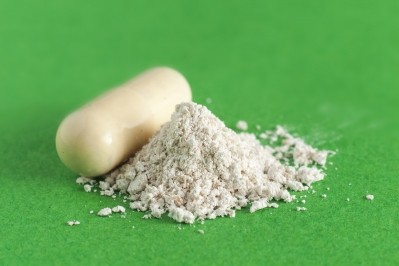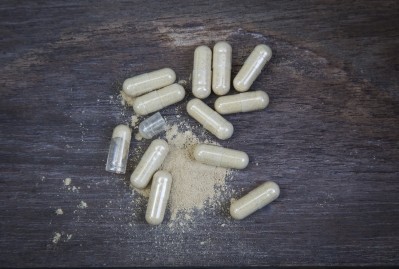NDIs: When to file, what FDA wants to see, and how companies can protect themselves

How Did we get Here? The Background and the Goal of the Draft Guidance
The Federal Food, Drug, and Cosmetic Act (the FD&C Act) requires that manufacturers and distributors who wish to market dietary supplements that contain "new dietary ingredients" notify the FDA about these ingredients. The 1994 Dietary Supplement Health and Education Act (DSHEA) provides that the manufacturer or distributor of a new dietary ingredient that has not been present in the food supply without chemical alteration as an article used for food, or a dietary supplement containing such an NDI, must submit a premarket safety notification to FDA at least 75 days before introducing the product into interstate commerce. Dietary supplements are considered “adulterated” if they contain an NDI not used in the food supply and the required notification has not been submitted to the FDA 75 days before marketing. Generally, the notification must include information that is the basis on which the manufacturer or distributor has concluded that a dietary supplement containing a new dietary ingredient will reasonably be expected to be safe under the conditions of use recommended or suggested in the labeling.
FDA’s revised draft guidance supersedes the one FDA issued in 2011 which was criticized by supplement companies as imposing significant and unnecessary burdens, and by some environmental groups as having too many loopholes. “This revised draft guidance is an important step forward in the agency’s work to protect public health from potentially dangerous new dietary ingredients,” said Steven Tave, acting director of the FDA’s Office of Dietary Supplement Programs. “Notification of new dietary ingredients is the only pre-market opportunity the agency has to identify unsafe supplements before they are available to consumers. The revised draft guidance is intended to improve the quality of industry’s new dietary ingredient reporting so the FDA can more effectively monitor the safety of dietary supplements.”
The goal of the original NDI regulation in 1997 was to ensure that NDI notifications contain the information that is necessary for FDA to evaluate whether a dietary supplement containing an NDI is reasonably expected to be safe. Sheer volume in the marketplace, however, has created a problem. In 2012, FDA estimated that there were 56,000 dietary supplements on the market and that 5,560 new dietary supplement products come on the market each year. As of December 2014, however, FDA had received and completed evaluation of only 750 NDI notifications since the first notification was received many years ago. It will of course take some time to determine whether this new draft guidance will lead to an increase in completed evaluations.
I. WHETHER AND WHEN TO FILE AN NDI NOTICATION
“New Dietary Ingredients”
Under the FD&C Act, a “dietary ingredient’ it is any of the following: (1) vitamin; (2) mineral; (3) herb or other botanical; (4) amino acid; (5) dietary substance for use by man to supplement the diet by increasing the total dietary intake; or (6) a concentrate, metabolite, constituent, extract of any of the above. FDA interprets “dietary ingredient” to refer to ingredients that (1) if marketed today, would qualify as “dietary ingredients”; and (2) when marketed before October 15, 1994, were intended for use as or in a product that would now be a “dietary supplement” and that would not also meet the definition of a drug. So, to bypass the NDI requirement, the ingredient has to have been marketed as a dietary ingredient — meaning that it was marketed in or as a dietary supplement, or for use in a dietary supplement — in the U.S. before October 15, 1994.
Who is Required to Submit an NDI?
Either the manufacturer or distributor of a dietary supplement that contains an NDI, or the manufacturer or distributor of the NDI, must notify FDA at least 75 days before commencing marketing. Although FDA does review notifications from manufacturers and distributors of NDIs, notifications from ingredient manufacturers do not eliminate the requirement for a notification from the manufacturer or distributor of the dietary supplement in which the NDI will be used unless the prior notification for the NDI: (1) included a description of the dietary supplement; and (2) provided the history of use or other evidence of safety on the basis of which the notifier concluded that the dietary supplement would reasonably be expected to be safe under its labeled conditions of use. The NDI adulteration standard provides that a dietary supplement containing an NDI is adulterated unless there is adequate information to provide reasonable assurance that the NDI does not present a significant or unreasonable risk of illness or injury.
When is a NDI Not Required?
Even if the dietary ingredient was not marketed in the U.S. before October 15, 1994, no NDI is required if the NDA and all other dietary ingredients in the dietary supplement was present in the food supply as articles used in food and if that food has not been chemically altered. FDA says that “present in the food supply” means conventional food supply as an article of food or food ingredient. So, if the food was chemically altered, an NDI is required. These terms leave some ambiguity. For purposes of understanding whether a company can qualify for the exemption, however, FDA is clear that “food supply” does not include dietary supplements. FDA’s thinking on this is that substances added to conventional foods have a longer track record and have to meet certain safety standards that are more demanding than the ones that apply to dietary supplements. Critics of the draft guidance argue it contains loopholes similar to the 2011 guidance, including allowing any chemical that already exists in the food supply to be exempt from the rule even if the supplement maker is using it in a new, potentially dangerous way.
A Change in the Manufacturing Process Could Trigger NDI Requirement
If a company changes the manufacturing process for a dietary ingredient, that may make the ingredient subject to a NDI application. That is because FDA believes such changes could affect the “identity” of the food substance, or its safety and suitability for certain uses. Hence, the draft guidance says that any changes to a company’s manufacturing process that alters the identity of the ingredient will convert that previously marketed dietary ingredient into an NDI.
Botanicals and Avoiding the NDI Process through GRAS?
The draft guidance continues the 2011 version’s tough position on synthetic compounds and this could create some challenges for manufacturers. Synthetic forms of compounds found in nature have been marketed for some time and are generally a more cost effective alternative. The 2011 draft guidance took the position that if a synthetic was created and not natural (as in grown from the ground), the synthetic was not a dietary ingredient. The new draft guidance relaxes this position somewhat by saying that synthetic versions of natural compounds can qualify as dietary ingredients if they have a history of use in the food supply.
One way manufacturers have been able to bypass the NDI process is utilizing the “generally recognized as safe” (GRAS) process accepted by the FDA. This will likely continue, if not accelerate, under the new draft guidance because GRAS substances are not subject to the premarket approval requirements of the FD&C Act. Under the GRAS program, a manufacturer notifies FDA that a particular use of a substance has been determined to be GRAS. After evaluating the data, FDA informs the notifier utilizing the GRAS process that: 1) it has no questions currently as to the basis for the determination, or 2) it has determined that the notice does not provide a sufficient basis for a GRAS determination. There are significant differences between the NDI and the GRAS process. The GRAS criteria require that the safe use of an ingredient in human and animal food be widely recognized by the appropriate qualified experts. If so, then it is exempt from the NDI requirement. While the same quality and quantity of scientific data required to support a food additive petition are needed to support a GRAS determination, there is no requirement that the data be provided to FDA prior to marketing a product on this basis. The GRAS process essentially involves self-affirmation by the manufacturer. To date, as long as FDA does not object to the GRAS designation, a company can avoid NDI process. Some argue that FDA’s not taking a softer stance on synthetics will result in more companies using the GRAS route, and that in turn will lead to less safety information getting to FDA through the NDI process.
NDIs No Longer required on Each Finished Product
The draft guidance makes one significant concession to the supplement industry in that companies no longer will be expected to submit separate NDI notifications for every single finished product on the market containing an NDI ingredient. This provision in the earlier draft guidance was met with criticism by the supplement industry. Under the 2016 draft guidance, FDA envisions a company being able to submit one NDI that it calls a “master file” and would be allowed to include various product formulations in one submission. This option would drastically reduce the number of NDI notifications industry would need to submit and reduce the cost of submitting multiple NDI notifications.
The company submitting the data would be expected to list a range of dosages for the NDI, and combinations of the NDI with other ingredients, and confirm that they would still be reasonably safe. Such an “omnibus” notification would also have to include other data such as potential daily intake levels, serving sizes, duration of use, frequency of intake, target population, and dosage forms that would still render a product containing the NDI to be reasonably expected to be safe. Companies would then only need to submit a new NDI notification if their use of the NDI ingredient fell outside of the original notification’s specifications.
II. WHAT THE FDA WANTS TO SEE IN NDI NOTIFICATIONS
In addition to giving great detail on further defining dietary supplements and when an NDI is required, the draft guidance addresses the substance – what information to provide FDA – and also includes a proposed template document a manufacturer or distributor can use in their submissions. Things that must be provided include a detailed description of the NDI, manufacturing methods and practices to establish identity and safety, specifications to identify dietary ingredients, contaminants and the analytical methods used to establish each and identity references. Also required is a complete safety and toxicological profile.
Here are things that need to be included in the submission:
- A full description of the identity and composition of the NDI and the dietary supplement in which the NDI will be marketed;
- A discussion of the basis for the manufacturer’s conclusion that the substance is an NDI;
- A description of the conditions of use recommended or suggested in the labeling of the dietary supplement, or if no conditions of use are recommended or suggested in the labeling, the ordinary conditions of use of the supplement; and
- An explanation of how the history of use or other evidence of safety in the notification justifies the company’s conclusion that the dietary supplement containing the NDI will reasonably be expected to be safe.
The NDI comprehensive safety profile should provide objective summaries of all available human and animal toxicological information (including both published and unpublished safety studies) and any other information relevant to the safety assessment of the NDI. The information should also substantiate the safe use of the NDI in humans under the proposed conditions of use described in the notification. The profile should document the identity and historical uses of the NDI, including the intake level, frequency, and duration of the historical uses, as well as a description of the size and characteristics of the population that consumed the NDI. To the extent that test articles or materials described in the history of use and other evidence of safety are not identical to the NDI, the similarities and differences should be described, and the applicability of the study to the safety evaluation of the NDI should be explained.
Confidential Information in the NDI Filing
After the 90th day from the NDI filing, all information in the NDI notification will become public except for trade secret or confidential information. How does a manufacturer or distributor protect its confidential material included in the submissions? The guidance recommends clearly identifying such information in the notification and also to explain the basis for such a claim. The guidance says trade secret information may consist of any commercially valuable plan, formula, process, or device that is used for the making, preparing, compounding, or processing of trade commodities and that can be said to be the end product of either innovation or substantial effort. To protect the information submitted there must be a direct relationship between the trade secret and the productive process; for example, information relating to the manufacturing process. The information is then considered “confidential” if its disclosure is likely to cause substantial harm to the competitive position of the submitter. Examples of this include sales statistics, dollar volume, amount or source of income (e.g., a company’s list of customers), profits or losses and expenditures.
What Next and How to Protect Yourself?
The draft guidance, at 102 pages, is very lengthy and this article can only address the highlights. There is much more in the actual document and still many ins and outs a supplement manufacturer or distributor needs to know, and potential traps exist for the unwary or those new to the industry and the NDI process. The best practice is for manufacturers and distributors to comply with these requirements in the draft guidance, even before it becomes final. And because FDA scrutiny of the industry will continue, best practice also includes seeking advice on compliance going forward and when in doubt. Late last year FDA created the Office of Dietary Supplement Programs. In doing so, the agency reiterated its pledge to focus on products that contained harmful pharmaceutical agents, were falsely labeled, or otherwise posed danger to the public. This draft guidance is but another step in this direction.
Dennis Raglin is a life science litigation partner in the San Francisco office of Rimon, P.C. He counsels and defends medical device, pharmaceutical and biopharmaceutical clients. He can be reached at qraavf.entyva@evzbaynj.pbz

















